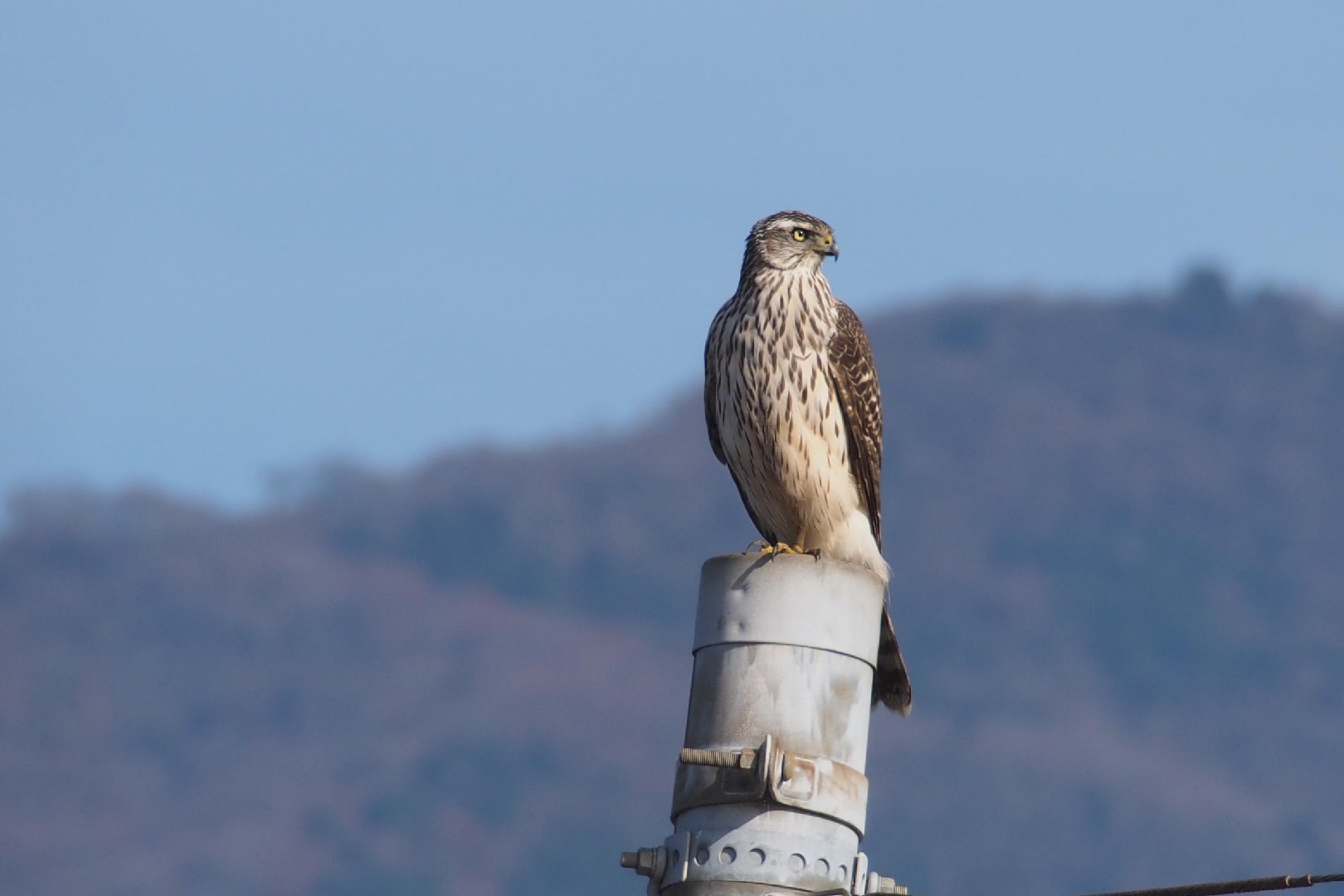Northern Goshawk
A species of Bird Hawks, Also known as Goose Hawk Scientific name : Accipiter gentilis Genus : Bird Hawks
Northern Goshawk, A species of Bird Hawks
Also known as:
Goose Hawk
Botanical name: Accipiter gentilis
Genus: Bird Hawks
 Photo By harum.koh , used under CC-BY-SA-2.0 /Cropped and compressed from original
Photo By harum.koh , used under CC-BY-SA-2.0 /Cropped and compressed from original Description
Northern Goshawk is a medium-sized raptor found in the temperate parts of the Northern Hemisphere. The scientific name, Accipiter gentilis, means noble or gentle hawk because it could only be used for falconry by nobility in the Middle Ages. The hawk only vocalizes during the nesting season or courtship.
Size
55 - 61 cm
Life Expectancy
11-19.8 years
Nest Placement
Tree
Clutch Size
2 - 4 eggs
Number of Broods
28 - 38 days
Nestling Period
34 - 35 days
Feeding Habits
Northern Goshawk's diet is diverse, including mammals like squirrels and hares, birds such as grouse and woodpeckers, reptiles, insects, and occasionally carrion. It hunts from a low perch and plucks feathers from its catch near the nest.
Habitat
Northern Goshawk thrives in old-growth forests with dense canopy coverage, essential for their adept hunting. Their adaptive nature to various climates leads them from lowlands to alpine heights, preferring environments with large, tall trees and sparse underbrush. Habitats range from mixed-hardwood and coniferous forests to riparian zones and open areas. They nest near natural openings and water sources.
Nest Behavior
During courtship, the female northern Goshawk primarily builds or refurbishes the nest with occasional male assistance. Nesting materials are collected in the morning and may continue to be added throughout the nesting period. Northern Goshawk exhibit reuse of old nests or those built by other accipiters, demonstrating adaptability in nesting habits. Parental care extends to consistent maintenance and lining of the nest with green material.
Nest Characteristics
Northern Goshawk typically nest in the largest trees within a stand, sometimes utilizing existing nests. Preferred species include beech, maple, oak, aspen, Douglas-fir, white fir, ponderosa pines, larch, hemlock, and birch. Nests are constructed with sticks, lined with bark and greenery, and measure about 3-4 feet by 1.6-2.2 feet, with an interior cup approximately 9 inches across and 3 inches deep.
Dite type
Avivorous
People often ask
Migration Overview
Although at times considered rather sedentary for a northern raptor species, the northern goshawk is a partial migrant. Migratory movements generally occur between September and November (occasionally extending throughout December) in the fall and February to April in the spring. Spring migration is less extensive and more poorly known than fall migration, but seems to peak late March to early April. Some birds up to as far north as northern Canada and central Scandinavia may remain on territory throughout the winter.
General Info
Feeding Habits
Bird food type
Sounds
Call
Recording location: Belgium
Call
Recording location: Belgium
Behavior
Northern Goshawk exhibit a range of distinctive behaviors that reflect their predatory lifestyle. Their daily activities primarily involve stealthy, short flights from perch to perch while hunting birds and small mammals, often utilizing surprise tactics and swift, agile pursuit through dense forests. Their powerful flight is complemented by adept maneuvering with the help of a long tail, enabling them to navigate the challenging terrain of their woodland habitats. On foot, they can effectively stalk and overpower prey considerably larger than themselves. The courtship ritual of breeding pairs includes an impressive sky dance, a show of aerial acrobatics high above the treetops, as well as frequent and vigorous mating. Parental roles are well-defined, with males taking the lead in provisioning food for the chicks while females vigilantly guard the nest. Bold and territorial, northern Goshawk aggressively defend their young, readily confronting human intruders and even engaging in lethal conflicts with other raptors to protect their offspring and secure their nesting space.
Distribution Area
The northern goshawk has a large circumpolar distribution. In Eurasia, it is found in most areas of Europe excluding Ireland and Iceland. It has a fairly spotty distribution in western Europe (e. g. Great Britain, Spain, France) but is more or less found continuously through the rest of the continent. Their Eurasian distribution sweeps continuously across most of Russia, excluding the fully treeless tundra in the northern stretches, to the western limits of Siberia as far as Anadyr and Kamchatka. 